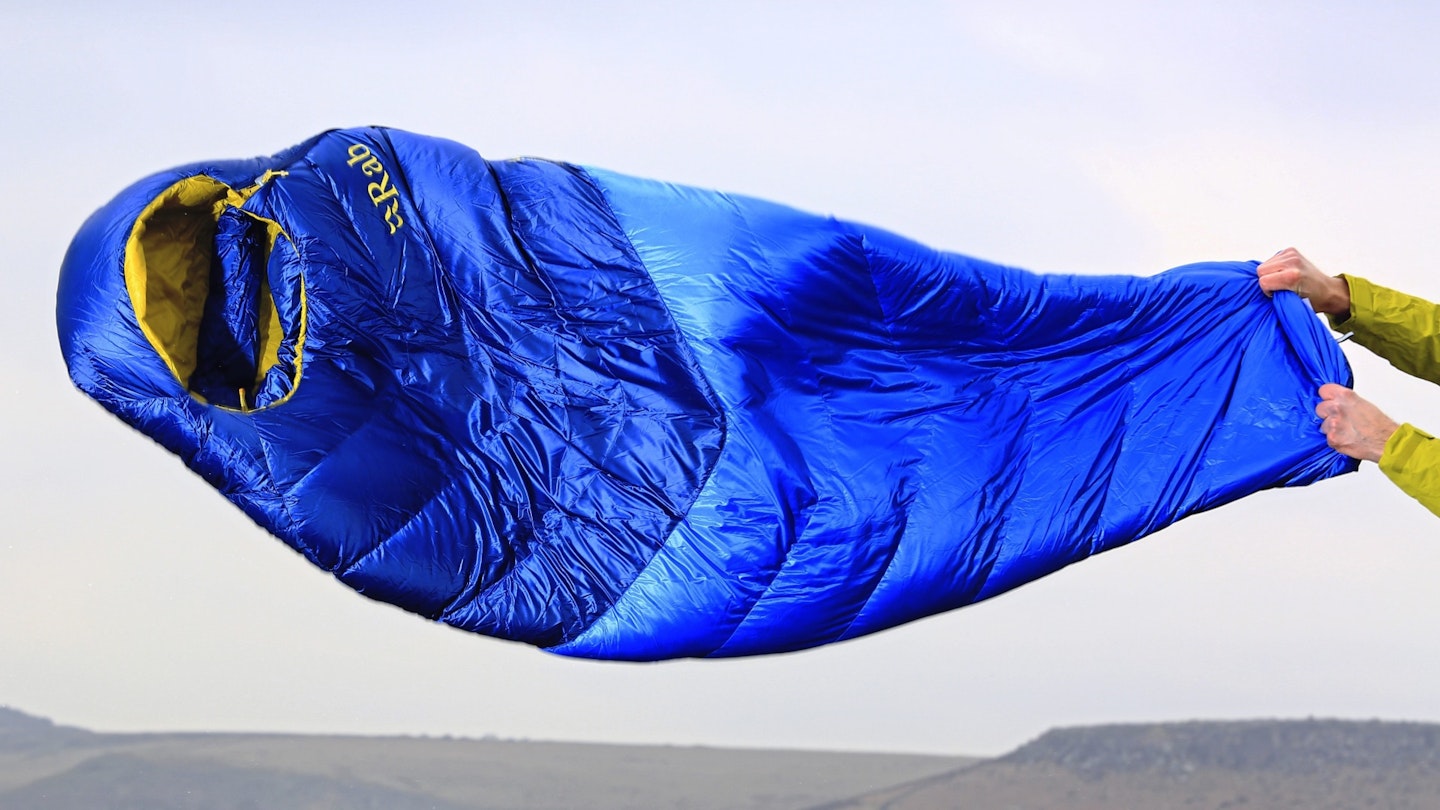Rab’s Neutrino range of down sleeping bags – which are hand-filled in Derbyshire – have a longstanding and stellar reputation. Now featuring an eco upgrade, with PFC-free DWR treatments and more recycled materials, the range is described by Rab as “lightweight in your packs and on the planet” with “exceptional packability and warmth-to-weight”.
It’s difficult to disagree. From our testing, the bags are fully-featured and well-designed, delivering a warm and comfy night’s sleep.
Shopping from the Neutrino range is a joy too. There are 10 products, each filled with 800 fill power goose down. The fill weight, however, increases in 100g increments from 200 to 900, with the number after each bag relating to its fill weight.
Eight models are in unisex versions, the 400 and 600 are available in women’s specific versions too, and the 300, 500, 700 and 900 are ‘Pro’ versions with a more weather-resistant Pertex Quantum Pro shell. All of this choice means you can fine-tune your selection precisely to your needs and the temperatures you’re likely to experience. Here, we put the alpine-inspired Neutrino 400 to the test.
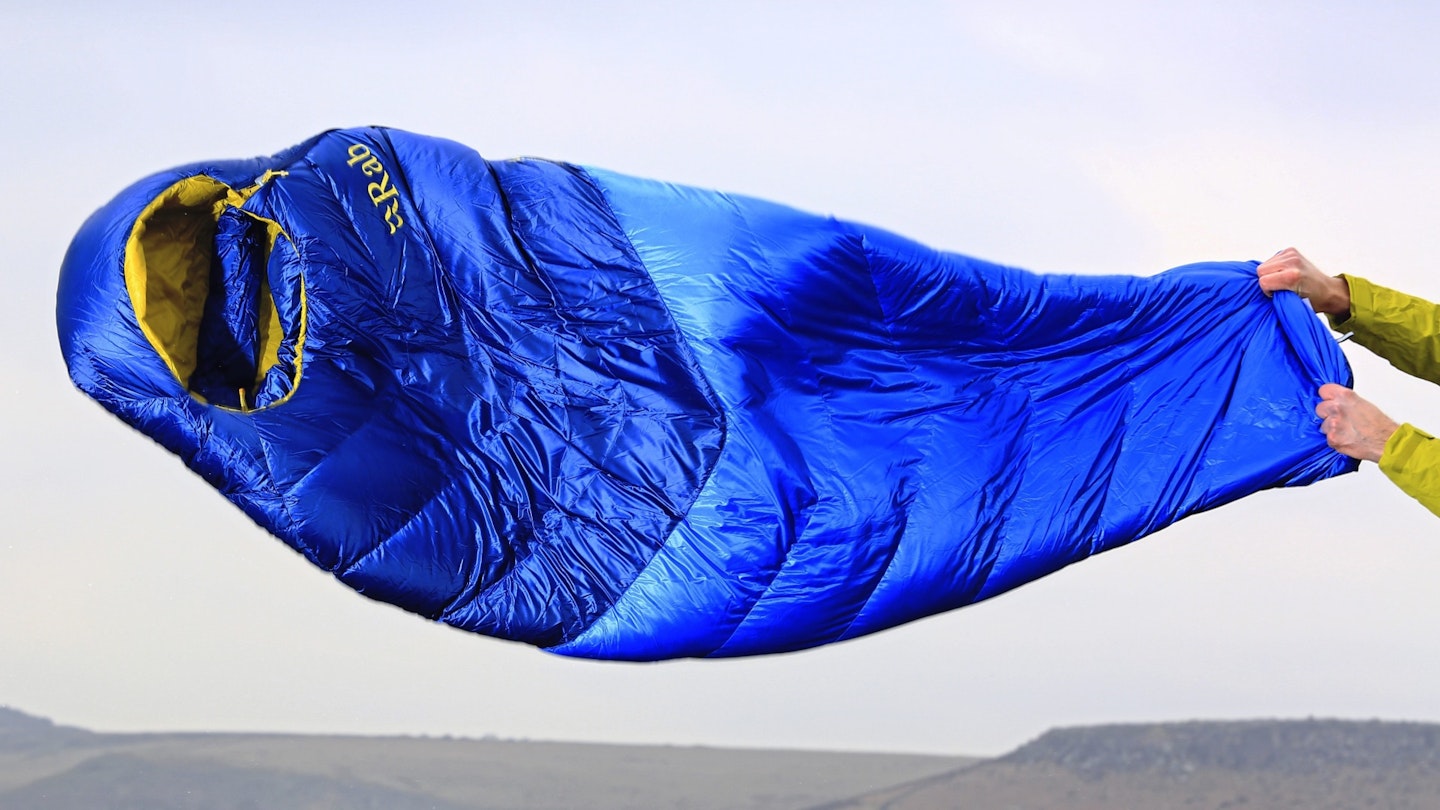
www.ellis-brigham.com
Pros
- Tried and tested design
- Excellent warmth-to-weight ratio
- Several sizes and versions
- Decent sustainability credentials
Cons
- Narrow mummy shape won't suit everyone
Temperature ratings
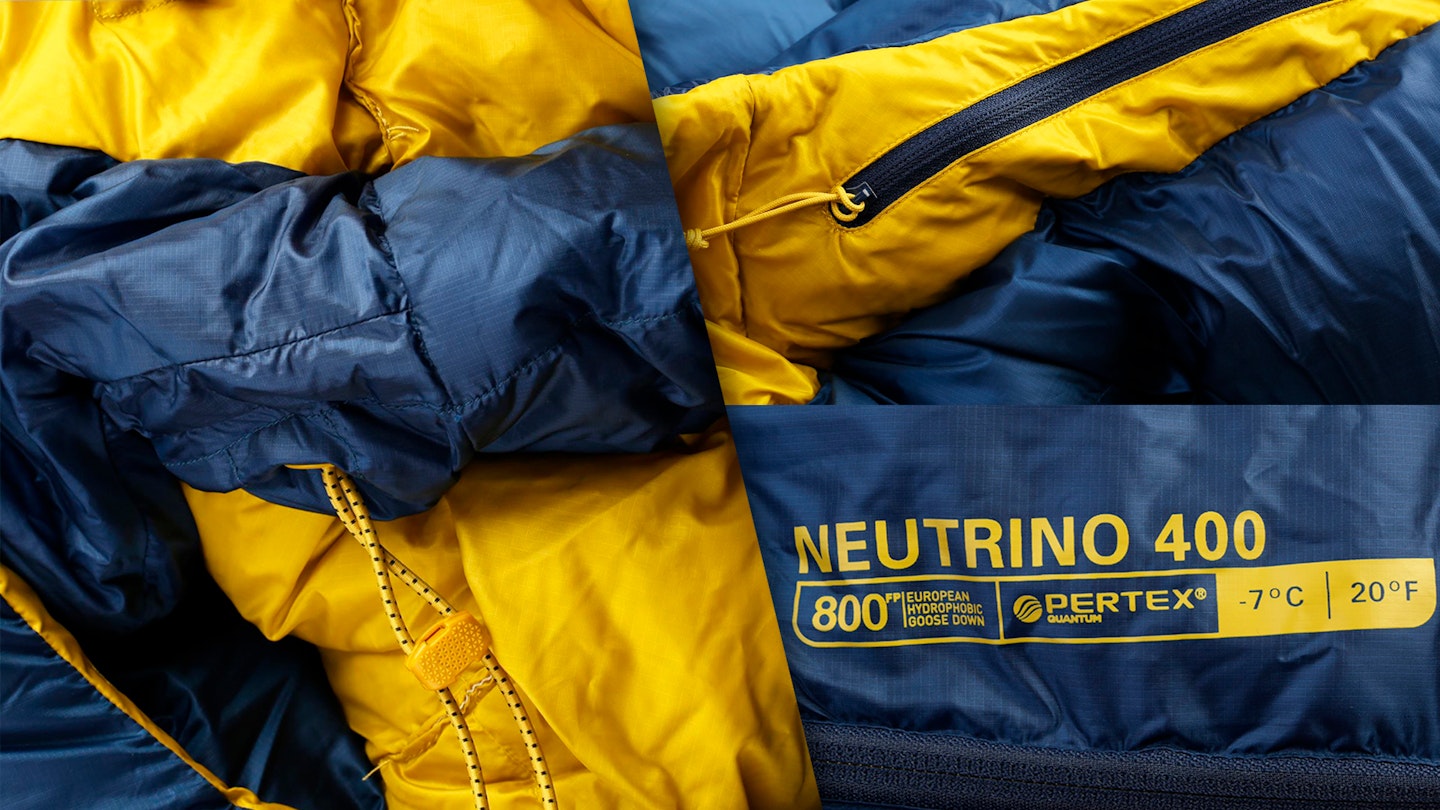
The Neutrino 400 has the following EN/ISO lab test temperature ratings: comfort -1°C, comfort limit -7°C and extreme -25°C. Rab also states the ‘Rab Sleep Limit’ temperature of -7C. This is not based on lab tests, but instead is Rab’s “real-world assessment of a sleeping bag's usable temperature limit”, based on past experience and feedback from Rab’s athletes.
If you need a lower temperature rating, the Rab Neutrino Pro 700 has a comfort rating of -4°C, for example, and the Rab Neutrino 900 has a Rab Sleep Limit of -22°C (Rab doesn’t state EN/ISO temperature ratings for some of its winter bags because “the EN/ISO test is not an accurate representation of the bag’s capabilities at really cold temperatures”).
Insulation type, fill power, and fill weight
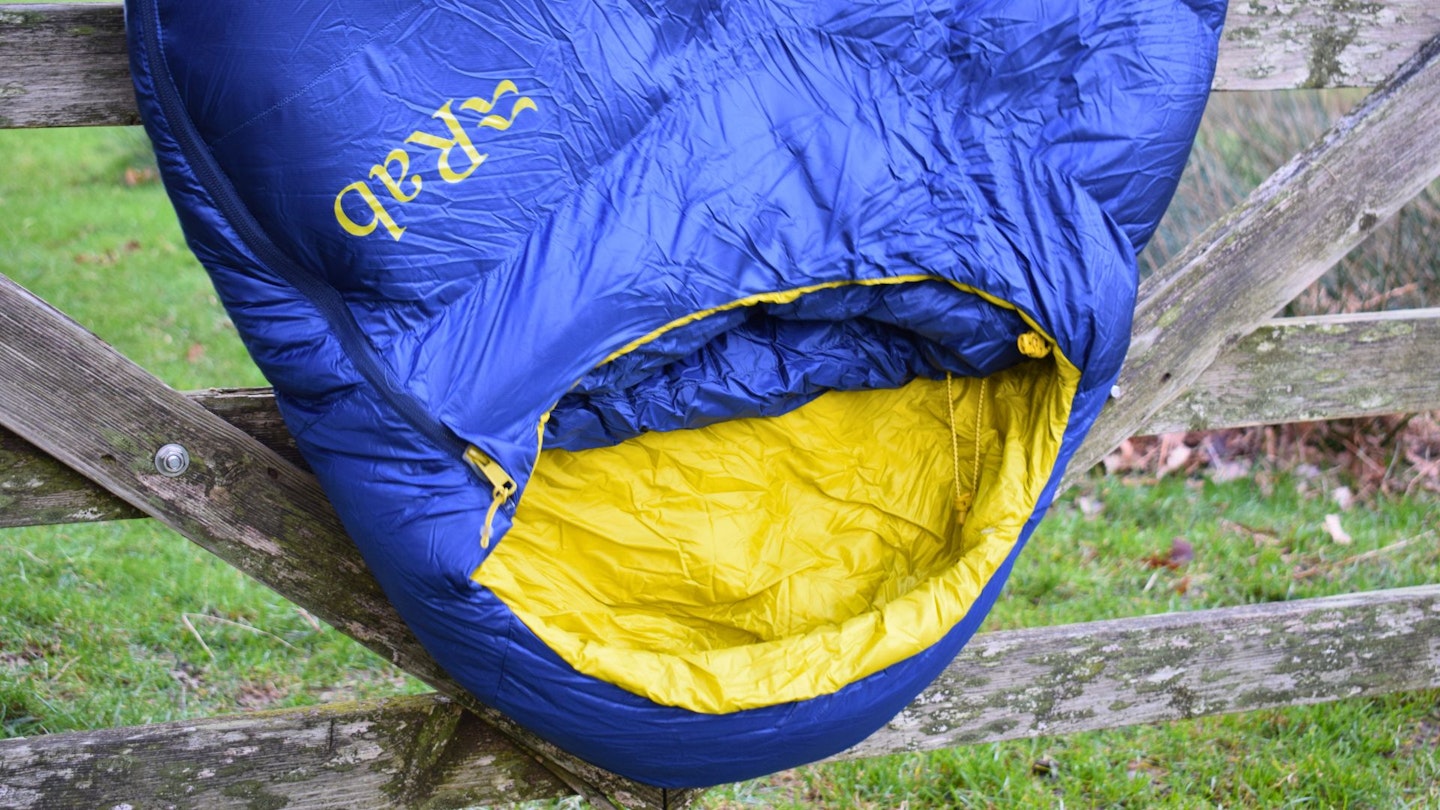
The Rab Neutrino 400 is filled with 800 fill power European goose down. 800 fill power is a high quality of down, meaning the insulation fluffs up to a thick, plush loft. Rab has also used down with Nikwax’s hydrophobic fluorocarbon-free finish, which ensures the down dries quicker, absorbs less water, repels water for longer and retains its loft better when damp.
This improves performance compared to regular down, when the interior of your tent is damp or struggling with condensation. But how much difference this really makes is very difficult to judge objectively, and – if you’re particularly concerned about camping in damp conditions – a sleeping bag with a synthetic fill may be a wiser choice.
The fill weight of the Rab Neutrino 400 is 400g. This is a decent fill weight and provides a comfort temperature rating of -1°C. But if you need more warmth, Rab’s other bags have a higher fill weight. The Neutrino 600 has 600g, the Neutrino 800 has 800g and the Neutrino Pro 900 has 900g.
All of the down used by Rab adheres to the Responsible Down Standard, ensuring it meets important ethical criteria.
Pack size and weight

The Rab Neutrino 400 clocks in at a weight of 775g in the regular version. This is impressively lightweight for a comfort temperature rating of -1°C. You’ll struggle to find a better weight-to-warmth ratio anywhere, without spending a fortune – but it’s not impossible. The Mountain Equipment Firelite (770g, -2°C comfort), Thermarest Hyperion 20F (580g, 0°C comfort) and Sea to Summit Spark III (665g, -2°C comfort) are a few sleeping bags that can compete with the raw stats of the Neutrino 400.
The Neutrino 400 weighs 835g in the long version. The wide version also weighs 835g, while the long-wide version is 895g. The regular size Neutrino 400 compresses down to a packed size of 35cm x 23cm, when packed inside the included stuff sack. This compression sack is waterproof with rolltop closure, and it weighs 58g.

For storage at home, a much bigger zippered storage sack (60cm x 30cm) with a waterproof base is provided. Using this cuboid-shaped sack ensures you won’t ruin the down’s loft by storing the sleeping bag compressed for months on end.
Materials and sustainability
The outer shell of the Neutrino 400 sleeping bag is made from recycled 20-denier Pertex Quantum ripstop nylon, with a PFC-free DWR (durable water resistant) coating. Pertex Quantum is a soft, lightweight and windproof fabric. The lining of the sleeping bag is also a 20-denier recycled nylon.
Eager to avoid any greenwashing, Rab also states the overall recycled content of all its products through its innovative Material Facts initiative. This is a market-leading level of transparency and a wonderful antidote to the misleading marketing claims about sustainability from some other brands. The Neutrino 400 has an overall 43% recycled content. The outer and liner are 100% recycled, the down is 0% recycled, the zips are 39% recycled and the trims are 8% recycled.
Size and shape

The Neutrino 400 has a tapered mummy design with a narrow, tight cut. Some will love this cosy, snug fit; others may find it too restrictive, particularly side sleepers or those who tend to toss and turn at night. The tapered mummy shape is Rab’s narrowest bag shape, designed to eliminate ‘dead space’ (which can lead to cold spots) and maximise thermal efficiency. While compromising on space, this shape improves performance and keeps pack size and weight to a minimum.
The regular Neutrino 400 sleeping bag is sized for anyone with a height up to 185cm. The sleeping bag length is 215cm, the internal shoulder girth is 160cm, the internal hip girth is 134cm and the internal foot girth is 102cm. The wide version adds 20cm, 12cm and 8cm to the internal shoulder, hip and foot girths respectively. The long version has a 230cm length, so an extra 15cm.
The women’s specific version of the Neutrino 400 costs £420, weighs 765g (10g less) and is 200cm long. It is very similar to the regular version, but has a cut slightly streamlined to a female body shape.
Features
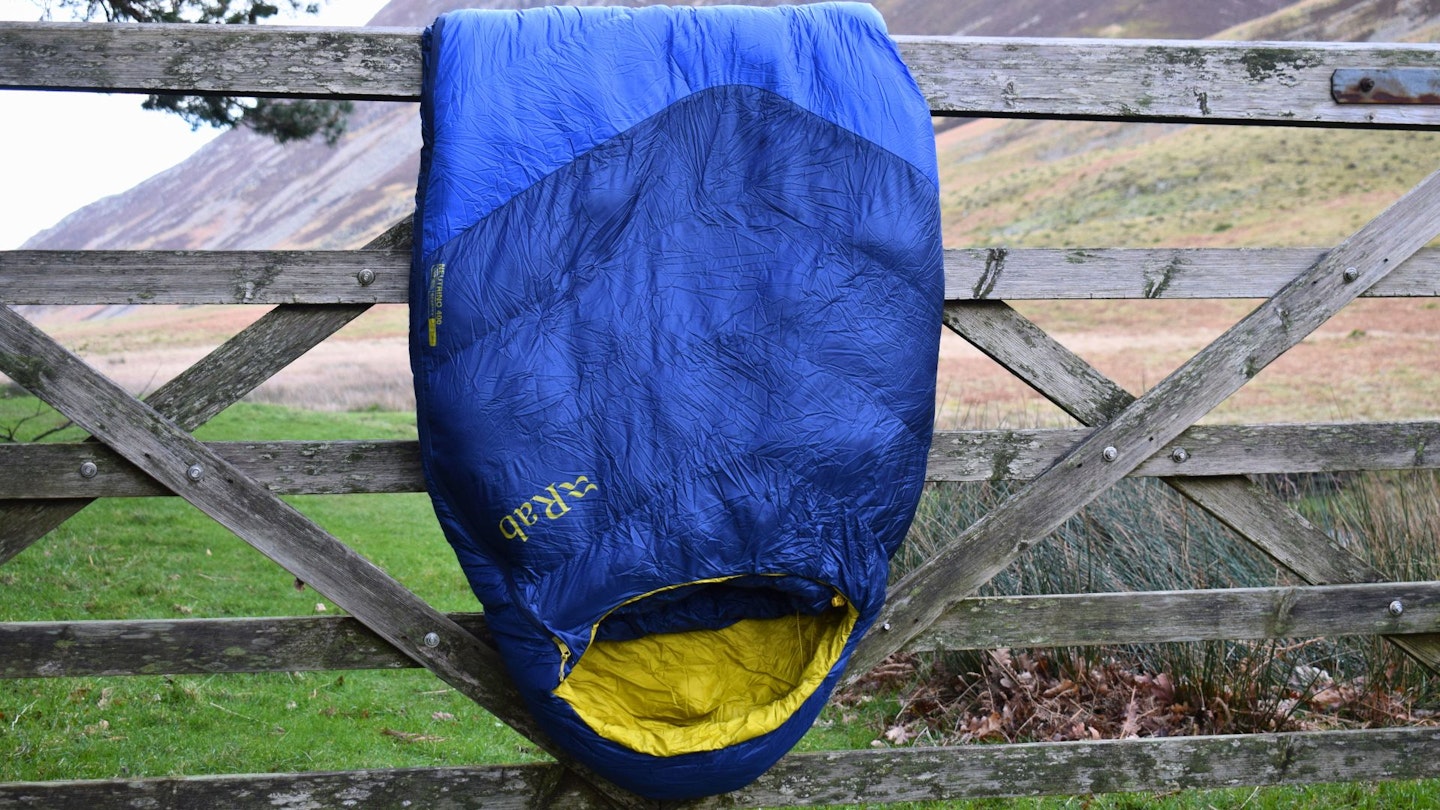
The Rab Neutrino has loads of impressive features. You get a ¾ length YKK main zipper, with a synthetic filled baffle to trap warmth. In the regular size, you can choose between a left or right side zipper, but in the wide, long and long-wide options only a left zipper is available.
Internally you get a little zippered stash pocket, which is useful for storing a headtorch, earplugs or whatever else you want. All of the zippers have anti-snag guards to help prevent the zipper ‘catching’ on the liner or shell.
The footbox is angled and shaped for a comfy fit, while the adjustable neck baffle has a close fit designed to decrease any heat loss. You also get a good hood, which can be cinched in using a drawcord for a fine-tuned fit
In terms of the baffles, Rab employs chevron-shaped baffles, which are “cleverly designed to reduce the amount of fabric needed compared to traditional horizontal baffles”, according to the brand, and help to ensure maximum loft and warmth, without allowing the down to spread out too much.
Verdict
The Rab Neutrino 400 is a top-performing, fully-featured sleeping bag with improved eco credentials – but it’s pricey and the tight, tapered mummy fit might not suit all body shapes.
How we tested

The Rab Neutrino 400 was tested and reviewed by James Forrest. James has been a freelance gear tester and features writer for LFTO and our magazine, Trail, for several years.
James is based in the English Lake District, is a prolific peak bagger, long-distance walker, and one of the most high-profile outdoor writers in the UK.
